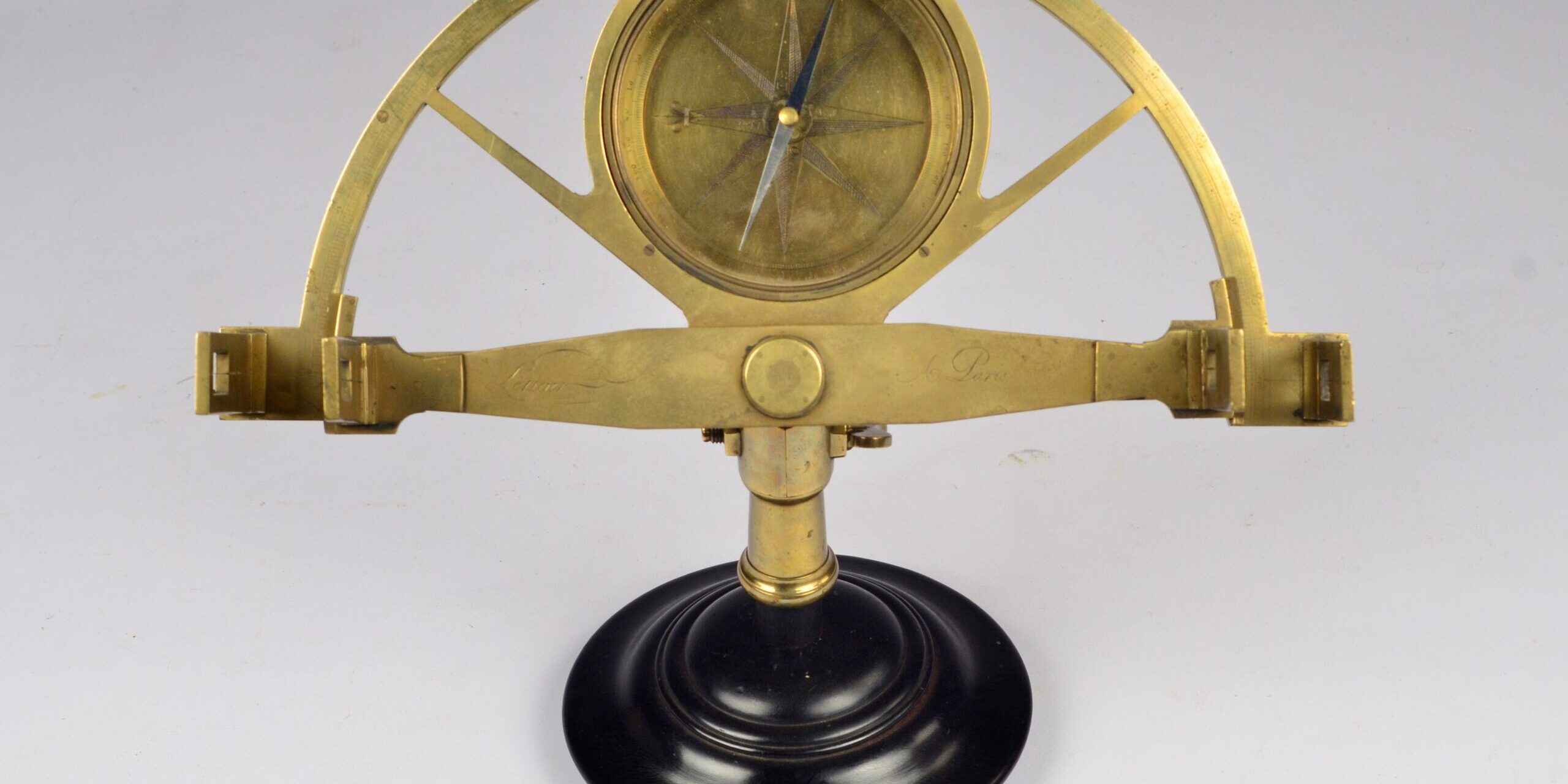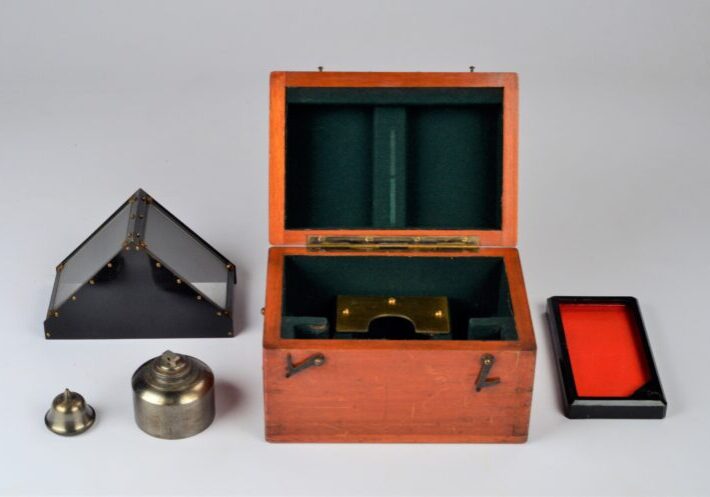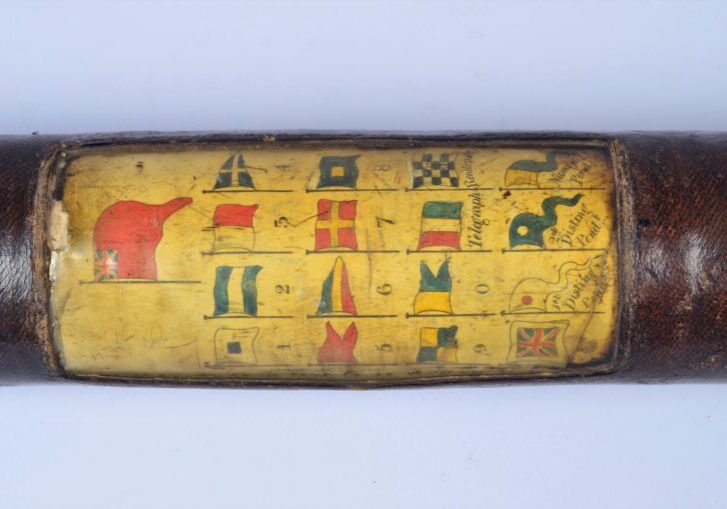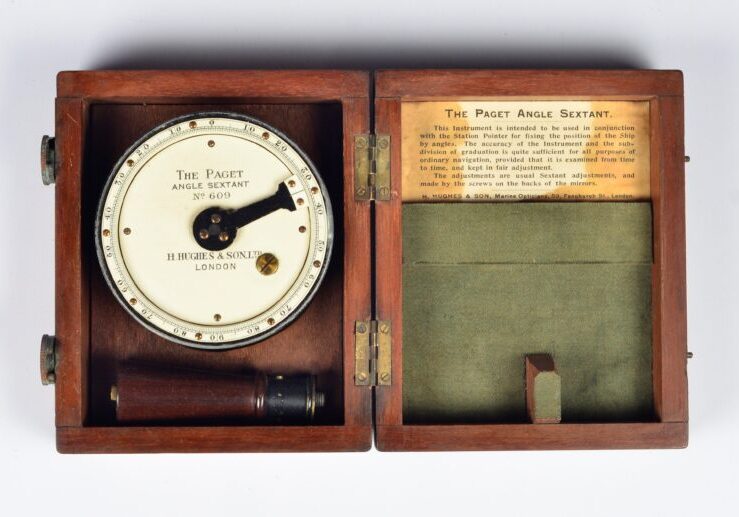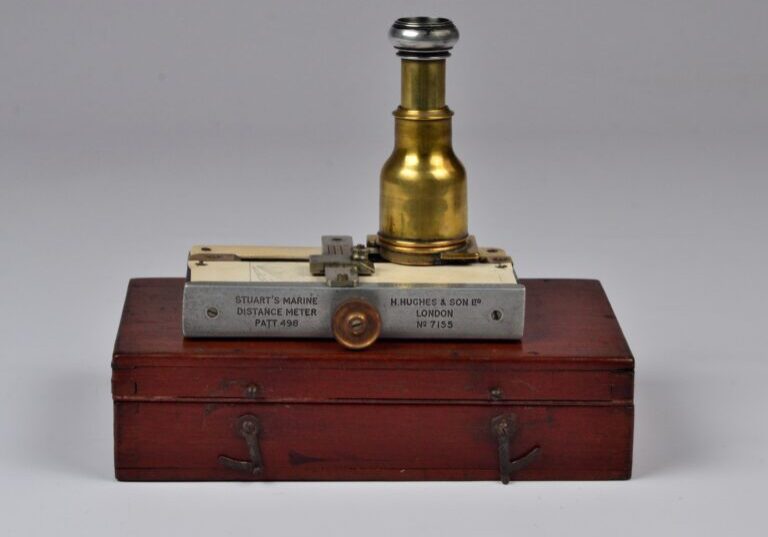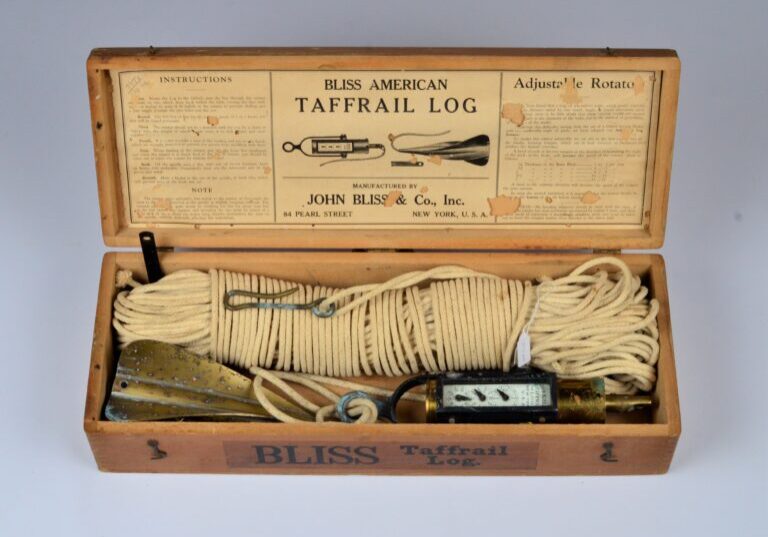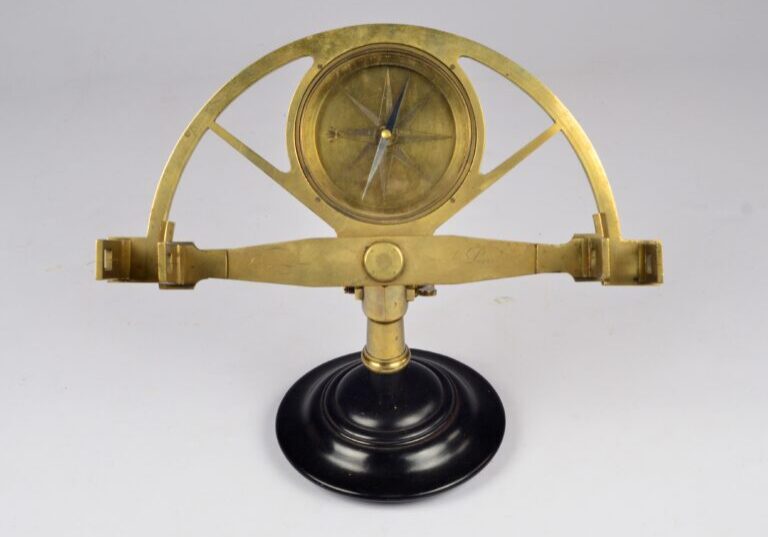Nautical instruments
This part of the collection includes mainly navigational instruments from the early sailing period, the time when ships were made of wood and men were made of steel.
Artificial or mercury roof horizon, rectangular black-lacquered cast iron trough with pouring hole and brass-framed roof-shaped cover with clear glass panels. Round iron bottle filled with mercury with stopper and iron funnel, in fitted wooden carrying box, signed and made by Sewill, maker tot he Royal Navy, Liverpool. Only a few copies of Sewill are known. Even the Maritime Museum in Greenwich does not have a copy.
The artificial horizon was used to establish the elevation of the sun or a star when the horizon was not visible. The vertical angle between the celestial body and its reflection in the mercury was mesured. This had to be halved to establish the angle of elevation above the horizon.
Catalog: NM.5-15
Date: ca. 1850
HWL case: 15x22x15 cm
Signed: Sewill, Maker tot he Royal Navy, Liverpool
Origin: England
Condition: excellent, perfect, the strap is broken and incomplete
Mercury is poisonous, please pay attention!
Very rare nautical slide rule made of plywood by A. M. Gordon, Glasgow, Scotland. With ‘scales of power & speed for proposed vessels on measured mile trials’ and ‘scale of IHP constant’ on the other side.
Catalog: NM.5-12
Date: ca. 1910
HWL: 0,5x34x9,5 cm
Signed: A.M. Gordon, M.I.N.A. Baltic Chambers, Glasgow
Origin: Scotland
Condition: perfect
Nice quality single draw telescope with two bras tubes, sunshade and good optics. Eye and objective lensos with a protective shutter. The mainbody is clad with leather and has taken on a nice antique patina, polished over the years. Both lenses have a sliding lens protector. The window displays flags and pendants of the British Navy. Some signs of age and use.
The stand is new made of old oak of about the same age as the telescope.
Price of the stand is E 85,=
Catalog: NM.5-10
Date: ca. 1880
L with sunshade: 58 cm, extended 96 cm (resp. 23 and 38 in)
D objective side: 40 mm (1.5 in)
Signed: not signed
Origin: England
Condition: for its age, perfect; in working condition, wear consistent with age and use
A very fine brass clinometer in original mahogany case. Clinometers have a variety of uses. With this type of clinometer the angle of inclination of a ship can be measured very accurately. For this purpose in still water, along the quay, a heavy weight is moved abeam with the loading equipment. The values found are used in stability calculations.
The instrument consists of a brass frame containing a highly sensitive cylindrical screw, graduated to minutes of a degree. The cylindrical screw is turned up until the spirit level indicates horizontal. Case and instrument have the same number 22991. In the case a correction table of 1942.
Catalog: NM.5-07
Date: 1941
HWL case: 82x277x200 mm
Case signed: E.R. Watts & Son, London – 22991 – 1941
Instrument signed: Clinometer Large – E.R. Watts & Son, London – 1941 – No. 22991
Origin: England
Condition: perfect
The sextant consists of two black lacquered round plates, the upper having an ivorine overlay. The handle is screwed into the bottom plate. The mirrors are between the plates. One mirror and the pinhole vane have a fixed position. The index mirror is moved by moving the index arm on the overlay. The position of the index mirror is read on the ivorine scale. The sextant is used in coastal navigation in combination with the station pointer.
The instrument is stored in a mahogany box. The lid contains instruction for use. The Paget sextant was designed around 1892 and marketed by Hughes. Number 609 is a fairly early instrument.
Catalog: NM.5-03
Date: ca. 1910
HWL case: 7×18,5×15,5 cm
D sextant: 11,5 cm
Signed: Hughes & Son, Ltd London – No. 609
Origin: England
Condition: perfect, in good and working condition, wear consistent with age and use
Beautiful complete Stuart distance meter made by Hughes in mahogany box. The distance meter was used in convoy sailing or to maintain a safe distance from a hazard. For detailed information on how to use the distance meter, see https://sextantbook.com/2012/07/13/a-stuart-distance-meter/
Catalog: NM.5-01
Date: ca. 1910
HWL case: 5x20x12 cm
Signed: Hughes & Son Ltd, London Nr. 7155
Origin: England
Condition: in good and working condition, wear consistent with age and use
Bliss log with four blade propellor and 200 feet line. Taffrail type with sling pattern leg. Tibular register with three dials on porcelain face, stamped 38 under the dials. Rotator with four blades and stamped John Bliss & Co. Patented in 1876. Wooden box with label on the front site and instructions for use on the lid.
Bliss had his shop at 120 Front Street, later at 84 Pearl Street in New York.
For more information about Bliss see: https://victoriancollections.net.au/items/52160ab619403a17c4ba2357
Catalog: NM.5-02
Date: 1910 – 1920
HWL case: 10x50x18 cm
L log: 27,5 cm
Signed: John Bliss & Co, end plate stamped nr 339
Origin: USA
Condition: unused but with corrosion spots, see pictures
Improved Taffrail Log with integrated flywheel, made by T.S. & J.D. Negus, Pearl Street, New York. Gray painted brass body with enamel dial reading up to 100 miles and subsidiary dial reading up to 10 miles. With a four bladed, brass rotator stamped with initial N and Negus New York. Incorporates short length of log line, a spinner and a mounting shoe. All fitted in the original wooden box with paper label on the outside and directions for use under the lid. Patented 1892. This log is almost identical to the Lionel type T.L. log but much earlier. Made around 1900.
Catalog: NM.4-52
Date: ca. 1900
HWL case: 22x22x57,5 cm (8.6×8.6×22.6 in)
Signed: T.S. & J.D. Negus, Pearl Street, New York Origin: England
Condition: very good, wear consistent with age and use
Graphometers were used by cartographers and hydrographers to measure horizontal angles. This large graphometer, 38 cm wide, with compass is in a very good condition. The main directions on the compass are fully marked with Nord, Sud, West en Ouest. The two scales are engraved by hand. The instrument is made by Etienne Lenoir (1744 – 1832) who had his workshop in Paris. In his time Lenoir was considered as the best designer of nautical and observation instruments. See also the reflectingcircle of Lenoir NM.3-24 in this catalog.
The wooden standard is of the 19th century.
Catalog: NM.1-52
Date: ca. 1780
HWD instrument: 22x38x18 cm (78.7x15x7.1 in)
Signed with elegant letters: Lenoir A Paris
Origin: France
Condition: perfect
